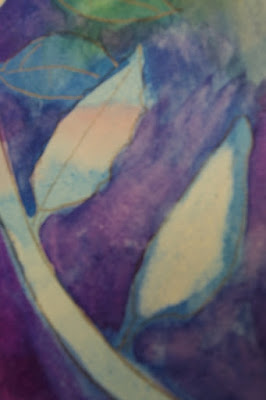Yesterday, I went to Stella Niagara Educational Park for a painting class. This time, the instructor, Virginia Kelley, offered a lesson on negative painting. This is an exciting technique for watercolor painting that adds a great deal of depth to the painting. Instead of painting the objects, you are painting the space around the objects. Virginia suggested that we make our paintings somewhat smaller than usual, so we each used a half-sheet of watercolor paper.
Virginia took us through the process, step by step, which I really appreciated because I have difficulty remembering multi-step directions.
The first thing that she had us do was to draw a picture of one daisy. Also, we needed to draw the stem. The stem comes from the center of the daisy, so if the daisy is off center, which is what Virginia suggested, the location of the daisy should indicate that. Having an off-center daisy is visually more appealing because it suggests movement. There is my daisy, above. |






























